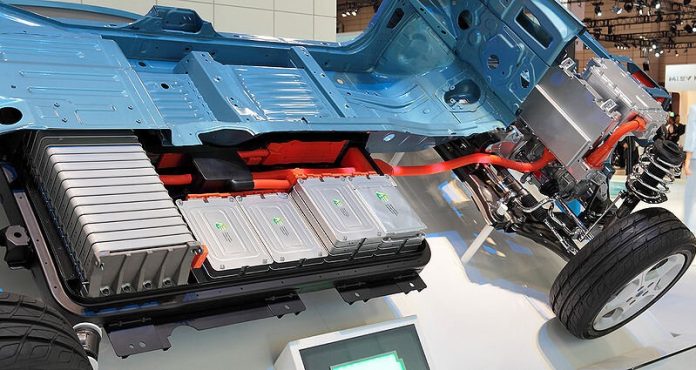
As the need for clean energy solutions grows due to global warming, the development of electric vehicles is gaining momentum.
However, to make electric vehicles more efficient, we need batteries with high energy density. Traditional lithium-ion batteries are not sufficient for this task.
Enter lithium-air batteries, which theoretically offer higher energy density.
However, before these batteries can become practical, they need catalysts to enhance their efficiency and cycle characteristics while reducing charging and discharging energy.
A recent breakthrough in Japan offers a promising solution using perovskite hydroxide catalysts synthesized through an innovative method.
To improve lithium-air batteries, an efficient catalyst is required to accelerate the oxygen evolution reaction (OER) inside the battery. The OER plays a crucial role in enhancing battery performance.
Noble metal oxides like ruthenium(IV) oxide and iridium(IV) oxide have been commonly used as catalysts, but they are expensive. More affordable alternatives are perovskite-type oxides and hydroxides, particularly CoSn(OH)6 (CSO), which has shown promise.
However, the existing methods for synthesizing CSO are time-consuming and multi-step processes.
A research team from Shibaura Institute of Technology in Japan, led by Prof. Takahiro Ishizaki, achieved a breakthrough by synthesizing CSO in just 20 minutes using a single-step process.
They utilized a solution plasma process, an advanced method for material synthesis in a nonthermal reaction field.
Through X-ray diffractometry, the researchers confirmed the high crystallinity of CSO synthesized from a precursor solution by adjusting the pH level. Under a transmission electron microscope, they observed cube-shaped CSO crystals with sizes ranging from 100 to 300 nm. Additionally, X-ray photoelectron spectroscopy revealed the presence of Cobalt (Co) in a divalent state and Tin (Sn) in a tetravalent state within the CSO compound.
To assess CSO’s efficacy as an OER catalyst, the team employed an electrochemical method. They discovered that the CSO synthesized at pH12 exhibited superior catalytic properties compared to other samples.
In fact, this sample showed slightly better performance than commercial-grade ruthenium(IV) oxide (RuO2), a highly regarded catalyst. The pH 12 sample had the lowest potential, 104 mV lower than commercially available RuO2 at 10 mA cm−2.
Implications for the Future: This study presents a simple and efficient process for synthesizing CSO, a catalyst with significant potential for use in lithium-air batteries. The successful synthesis of CSO through this method opens doors for next-generation electric batteries.
The superior electrocatalytic properties of CSO offer hope for its application in energy devices, ultimately contributing to the advancement of electric vehicles and a transition to a fossil fuel-independent energy system. This brings us closer to achieving carbon neutrality and a sustainable future.
“In the future, we hope that the perovskite-type CSO materials will find their place in energy devices and play a vital role in the advancement of electric vehicles,” concludes Prof. Ishizaki. This breakthrough represents a significant step forward in harnessing the power of perovskite catalysts for efficient and eco-friendly energy solutions.
The study was published in Sustainable Energy & Fuels.



